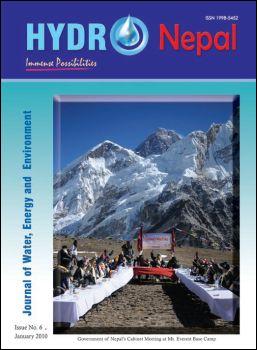Decision Making in the Electricity Bureaucracy: Case of Budhi Gandaki
DOI:
https://doi.org/10.3126/hn.v6i0.4197Keywords:
Storage type hydropower projects, Downstream benefits, Private investment, Resettlement and rehabilitationAbstract
There is a power shortage in the Nepalese market and in the peaking demand as well. This clearly indicates the need for storage type hydropower stations. The Budhi Gandaki (storage) Project (BGP) was identified and studied in 1983. The project has been proposed with an installed capacity of 600 MW by constructing a 225 m high dam on Budhi Gandaki River in central Nepal. The main attraction of this project is its nearness to the load centers. The government of Nepal decided to implement the project for more than three times; but there were no seriously interested investor. It has been 25 years that we have been talking about this project; but why the project is not happening is a crucial question to be addressed. Only recently, six developers have shown interest to develop it in association with the Nepal Electricity Authority. It is also interesting to know about the status of this project that has been left untouched since early studies in the 1980s. Further, there is a proposal of a road construction network in the BGP site area which might ruin the project.
Key words: Storage type hydropower projects; Downstream benefits; Private investment; Resettlement and rehabilitation
DOI: 10.3126/hn.v6i0.4197
Hydro Nepal
Journal of Water, Energy and Environment
Vol. 6, January 2010
Page: 61-64
Uploaded Date: 24 January, 2011
Downloads
Downloads
How to Cite
Issue
Section
License
The copyright of the articles and papers published is held by HYDRO Nepal Journal.
The views and interpretation in this journal are those of author(s), and HYDRO Nepal does not bear any responsibility for the views expressed by authors in the journal.




